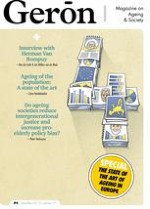In this special edition of Gerōn magazine, authors from several European countries shed light on aspects of the State of the Art of Ageing. We emphasize the words ‘aspects of’, because we realize that the articles in this edition reflect only a fragment of everything that is happening at the moment.
We present some comparative basic data about the older generation in different European countries as well as comparative data on subareas, such as health and care, employment and income and the domain that we characterize as ‘the art of ageing’.
Furthermore we concentrate on subjects that are related to expertise and research in one specific country, centred on special themes such as informal care, intergenerational exchange, migrants and lifestyle.
Can we define European policies when it comes to ageing and the older generation? Is that desirable? Or is it essentially the task of individual countries and their governments to develop successful policies on ageing. The latter is necessary, as it is fundamental in order to create support and determine policy down to local levels.
These explorations in Gerōn have led to the impression that the overall impact of policy measures in this domain by the European Commission (and even more so of the European Council) is rather low. The essence is to initiate networks across countries that generate comparative data and new insights on the basis of which the European countries are stimulated to develop innovative policies. Scientists, support groups, civil servants and politicians could benefit from these networks which, by the way, already operate on a regular basis in a number of committees across Europe.
The European year of Active Ageing and solidarity between generations in 2012 is a good example of such an incentive to develop new policies.
Considering this, it will be important to determine which basic values are shared between the Member States and to what extent differences in opportunities as well as deviations in the level of services for older people are acceptable. Obviously taking into account, and with respect for, socio-economic and cultural differences between the Member States.
In the light of the future, the relations between the different generations play an important role. How sustainable is our European society with respect to the interests of older people, now and in the future?
The radical demographic change that is taking place in the twenty first century demands an inspiring – and sometimes confronting – European incentive.
